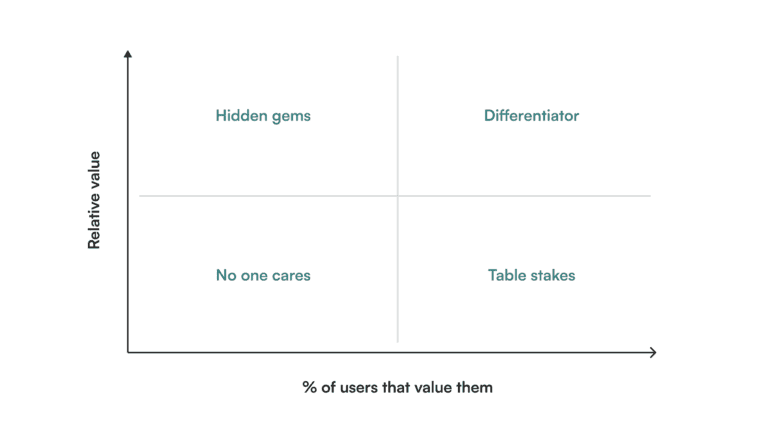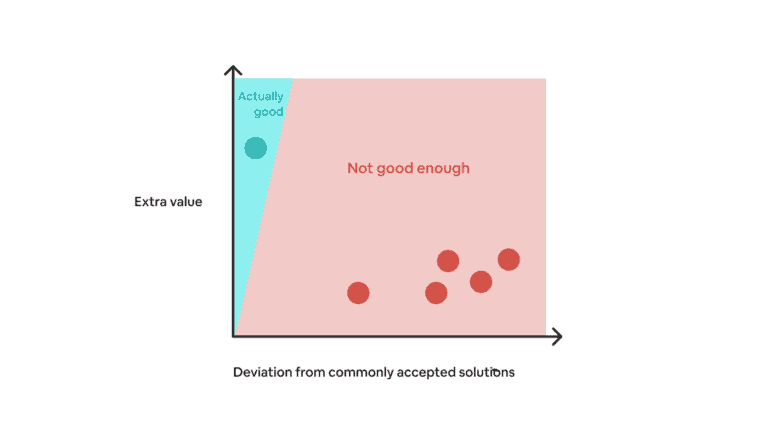We often hear how important Product Sense is to a product manager. It’s like the sharp vision of an eagle, helping it locate prey from miles away. That’s why many companies use product sense as a key criterion to evaluate their PM candidates.
But what is product sense exactly?
Although it’s technically not wrong to call it “the ability to understand what makes a product great,” I find this definition a bit self-repeating and ambiguous. Since there’s so much confusion around this term, even among many of my fellow PMs, I want to deep dive into what product sense is and isn’t to address common misconceptions and offer some clarifications.
Product sense is an acquired skill, not a born gift
First and foremost, product sense is a skill you refine through practice, not a talent you are born with. Your ability to tackle complex product problems become so efficient over time that it’s almost like a natural instinct — hence the term “sense”.
Of course, like everything in life, some people are going to be better at it naturally. However, since product sense is such a multidisciplinary skill, much like the profession of product management itself, that slight advantage is almost negligible in the long run.
Product sense is about understanding all possibilities, not finding one correct answer
In the world of product, “correct answer” doesn’t exist. The best solution will depend on whom you ask, what you value, and many other factors. A PM’s job is to explore all options, understand trade-offs, and align key stakeholders to make informed decisions, whether as a team or by himself or herself.
Applying the same concept, product sense shouldn’t be defined by how well a PM can guess the “correct answer” (again, it doesn’t exist). Instead, it should be equated to his or her ability to do the following things when limited information is given:
- Map out key problems with reasonable hypotheses
- Design high-level solutions with sound rationales
- Understand the potential pros and cons of each solution
- Know what questions to ask next
The ability to outline all potential paths and obstacles will take a product closer to its destination, even in extreme ambiguity.
Product sense is a complement to good PM practices, not a replacement
While having a good product sense amplifies the quality and efficiency of a PM’s work, it doesn’t replace the necessary processes for making product decisions, such as user research, quantitative analysis, and experimentation.
Think of it as playing basketball. Good athleticism might make you jump higher than your defenders, but if you don’t shoot with proper form, your shots still won’t go in.
You might be able to create a lovable MVP by relying on product sense alone, but it won’t be sustainable in the long run. Anyone who believes the myth that a product genius, such as Steve Jobs, can create successful products with only experience and intuition has likely not spent much time working with products beyond the early stage.
Product sense is not (simply) design sense
Some junior PMs and designers sometimes confuse product sense with “design sense” because they limit the scope of a product to its frontend interface. As a result, their conversations would primarily revolve around the UI or UX of individual features.
In reality, product sense is much more than that. It should identify the holistic value of a product beyond its look and feel. For example, an average person might not understand why an enterprise solution with clunky UI is successful, but a PM with good product sense would recognize the complex business logic the software is supporting under the hood.
Furthermore, as ProductTank Founder Martin Eriksson explained with his well-known diagram, a product manager is responsible for managing not only user experience but also business goals and technical feasibility — neglecting any part of the equation is bad product management.
That’s why product sense should also reflect a PM’s ability to consider “how does it help us attain business goals?” and “how much effort is needed to achieve this?” when making product decisions.
Product sense is both domain-specific and agnostic
As Stripe Product Lead Shreyas Doshi pointed out, a key element of product sense is domain knowledge. By familiarizing yourself with the common problems, solutions, constraints, and facts around a specific domain, you can make high-quality product decisions for 80% of the cases rather easily.
How about the remaining 20%?
Well, these are typically “hard problems” that require you to connect knowledge across different domains. In order to train yourself on doing so, you must apply first-principles thinking to comprehend why things work the way they are, rather than simply memorizing commonly-accepted beliefs. Over time, you will be able to mix and match domain knowledge and think outside of the box. This ability is often the key to unlock true, disruptive innovations.
Improving product sense
By understanding what product sense looks like, you will be able to reflect on your learnings more objectively when developing the skill. However, this is simply a start. To learn how to take your product sense to the next level, I recommend that you check out How to Improve Product Sense – A Practical Guide and the following resources:
- How to Develop Product Sense by Jules Walter, Product Leader at Youtube
- Product Judgment: How some people can repeatedly create product success by Paul Adams, Chief Product Officer at Intercom
- How to Learn Product Sense by Jackie Bavaro, former Head of Product at Asana
- How to Improve Your Product Sense by Shreyas Doshi, former Product Leader at Stripe
- Forget the MBA. Here’s the fastest way to become a product manager by Andy Lee (“STEP 1: Develop a product sense” section offers some practical approaches to improving product sense.)




